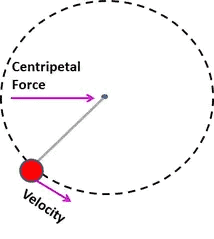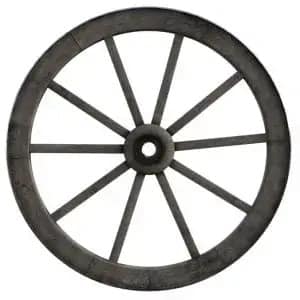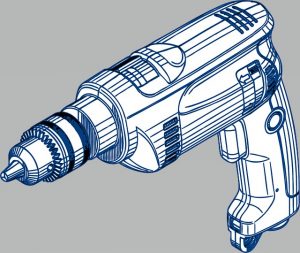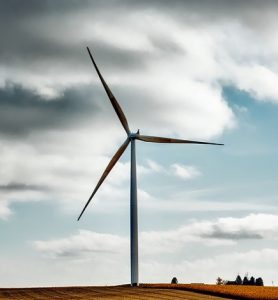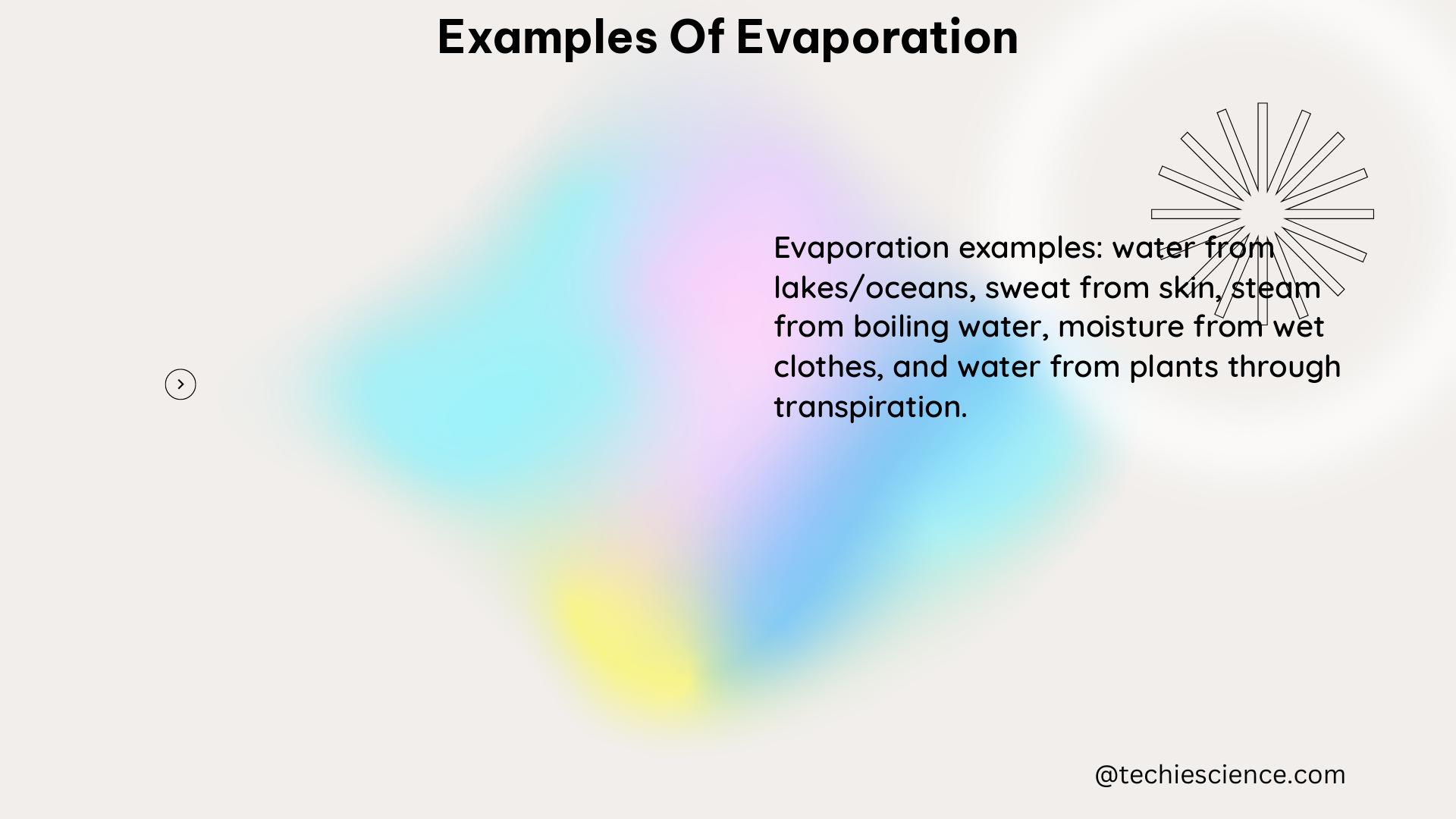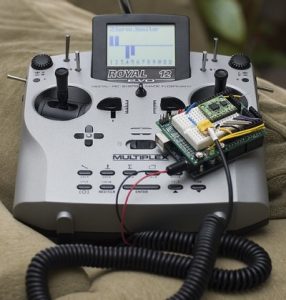Centripetal force is the force that keeps an object moving in a circular path. It acts towards the center of the circle and is necessary to maintain the object’s motion. On the other hand, centrifugal force is a perceived force that appears to push objects away from the center of the circle. While centrifugal force is not a real force, it is often used to describe the outward force experienced in a rotating reference frame. This force is especially relevant when considering examples of centripetal and centrifugal forces. Examples of centrifugal force explained. encompass various scenarios such as the movement of riders on a carousel or the sensation of being pushed outward while rounding a curve in a car. Understanding both centripetal and centrifugal forces is crucial in comprehending circular motion and related phenomena.
Table of Contents
Have you ever wondered what keeps a tetherball swinging in a circular motion or the Earth revolving around the Sun? The answer lies in centripetal force, a fascinating concept responsible for maintaining an object on its curved path.
In this blog post, we’ll dive deep into the world of centripetal force and explore its significance in our daily lives.
Key Takeaways
- Centripetal force is a net force that keeps an object moving along a curved or circular path, always directed towards the center of rotation.
- The relationship between centripetal force, mass, velocity and radius can be expressed using Fc = (mv2)/r. Understanding these principles helps explain everything from taking sharp turns while driving to planetary orbits and satellite technology advancements driven by centripetal force principles.
- Calculating centripetal acceleration determines the force required to keep an object moving in a circular path. The importance of understanding this principle lies in identifying the magnitude of this force needed to maintain stability and prevent accidents on curves or amusement park rides.
Basic Concept Of Centripetal Force
Centripetal force is a force that acts on any object and keeps it moving along a curved or circular path.
Definition And Working
Centripetal force, a fundamental concept in physics, is the net force that keeps an object moving along a circular path. It originates from the Latin words “centrum,” meaning center, and “petere,” which means to seek.
In action, take the example of swinging a yo-yo in a circular motion. The tension caused by the string connecting you to the toy serves as the centripetal force, guiding it to follow its circular trajectory.
Another noteworthy example includes Earth’s gravitational pull on the moon. This attraction acts as the centripetal force that keeps our natural satellite orbiting around our planet.
Centripetal Force In Circular Motion
Centripetal force plays a crucial role in circular motion, acting as the driving factor that keeps objects moving along a curved path. This net force is always directed towards the center of the circle, ensuring that an object’s trajectory remains curved rather than continuing in a straight line due to inertia.
For instance, imagine swinging a ball attached to a string around in circles above your head.
The relationship between centripetal force (Fc), mass (m), velocity (v), and radius (r) can be expressed using the formula Fc = (mv2)/r. This equation demonstrates how an increase in mass or velocity will result in greater centripetal force needed to maintain circular motion at a given radius.
Conversely, increasing the radius while maintaining constant mass and velocity means less centripetal force is required for stable movement along this larger circle.
Radial And Tangential Forces
Understanding radial and tangential forces is crucial in grasping the concept of centripetal force. Radial forces, often referred to as centripetal forces, act along the radius of a circle and towards its center.
These are responsible for keeping an object in circular motion by constantly changing its direction.
To better visualize these concepts, picture a spinning carousel at an amusement park. The inward pull experienced while sitting on this ride is due to the radial or centripetal force exerted towards the center of rotation.
Meanwhile, if one were to throw an object from their seat while spinning around in that carousel without any influence from external factors it would naturally follow a straight-line path away (as per Newton’s first law), tangent to the curve, this demonstrates tangential velocity.
Newton’s Laws And Their Relationship With Centripetal Force
In circular motion, Newton’s three laws of motion are related to centripetal force. The first law, also known as the law of inertia, states that an object in motion will remain in motion unless acted upon by a net external force.
The second law of motion states that the acceleration of an object is directly proportional to the net external force acting on it and inversely proportional to its mass.
Lastly, Newton’s third law states that for every action there is an equal and opposite reaction.
Centripetal Acceleration And Velocity
Calculating centripetal acceleration and its significance are important in understanding circular motion.
Calculating Centripetal Acceleration And Its Significance
Calculating centripetal acceleration is an important aspect of studying circular motion. Centripetal acceleration determines the force required to keep an object moving in a circular path, which is essential in various fields such as physics and engineering.
To better understand this concept’s significance, consider a car taking a turn on a curved road. The vehicle requires a centripetal force to maintain its circular trajectory; otherwise, it would slide off course or fly outwards due to centrifugal force.
The importance of calculating centripetal acceleration lies in identifying the magnitude of this force needed to prevent that from happening.
Velocity Of An Object In Circular Motion
The velocity of an object in circular motion refers to the speed and direction of its motion along a circular path. In uniform circular motion, the speed remains constant while direction continuously changes.
The radius of the circle plays a crucial role in determining the velocity magnitude, as it is directly proportional to it.
For example, imagine a car taking a turn on a racetrack. If it takes the turn at too high or low velocity for its given radius, it might either slide off the track or not make enough progress around it.
By adjusting its speed based on radius, drivers can maintain centripetal forces necessary for safe turns.
Role Of Radius In Centripetal Force And Acceleration
The radius of a circular path plays a crucial role in determining the amount of centripetal force and acceleration experienced by an object in uniform circular motion. A larger radius will require less centripetal force to maintain the same speed, while a smaller radius demands more force to keep the object moving in a circle.
Imagine riding a bike around two different circles, one with a large radius and another with a small radius. To maintain your speed on both circles, you would have to pedal faster on the smaller circle because it requires more centripetal force to sustain motion at that rate.
Conversely, pedaling at the same speed on both circles would result in you flying off the smaller circle because there isn’t enough centripetal force being applied to keep you stable.
Comparing With Other Types Of Acceleration
In analyzing the characteristics of centripetal acceleration, it’s crucial to compare and contrast it with other types of acceleration. Unlike linear acceleration, which is a change in velocity in one direction, centripetal acceleration results from changes in direction while moving at a constant speed.
It always points towards the center of rotation and is perpendicular to the object’s velocity vector. Additionally, tangential acceleration happens when an object speeds up or slows down while moving along a curved path.
One example that showcases this difference is comparing the forces acting on cars as they drive around curves. The frictional force between tires and road provides both tangential and centripetal components of force needed for circular motion.
Vertical Force And Its Impact On Centripetal Force
Another important factor to consider when discussing centripetal force is the impact of vertical force. In situations where an object is moving in a circular path, it experiences both horizontal and vertical forces.
For example, imagine a car driving around a banked curve on a racetrack. The inclination of the curved surface provides an upward normal force that counters the downward gravitational force acting on the vehicle.
Similarly, roller coasters use vertical forces to enhance their thrill factor by combining drops and loops with tight turns that exert high levels of lateral G-forces on riders.
Thus, understanding how various types of external forces interact with centripetal motion can help us design better vehicles and amusement park rides while also deepening our appreciation for this fundamental scientific principle at work all around us.
Centripetal Force Versus Centrifugal Force
Centripetal force and centrifugal force are often used interchangeably but they are not the same. Understanding the difference between these two types of force is crucial in comprehending circular motion and its various applications.
Defining Centrifugal Force And Its Applications
Centrifugal force is a fictitious force that results from the observation of an object moving in a circle from a non-inertial reference frame.
It appears to act on all objects in circular motion and is directed away from the center of rotation.
Understanding centrifugal force is important because it helps us explain why certain phenomena occur and design new technologies. For example, understanding how centrifugal forces affect fluid behavior can help engineers design more efficient fuel pumps for rocket engines.
In geography, the knowledge of this concept can assist in determining why water flows down hills instead of straight lines downhill or designing artificial gravity systems for space travel.
Difference Between The Two Forces In Action
Centripetal and centrifugal forces are closely related concepts in circular motion, but their meanings and actions differ in important ways. Here is a comparison of the two forces to help clarify their distinctions.
| Centripetal Force | Centrifugal Force |
| It is a real force acting on an object. | It is an apparent or pseudo-force experienced by an object in a rotating frame of reference. |
| Always acts towards the center of the circular path. | Appears to act outward, away from the center of the circular path. |
| Responsible for maintaining circular motion by counteracting the object’s inertia. | Result of the object’s inertia when experiencing centripetal force. |
| Examples include gravitational force, tension, and friction. | Experienced in a car taking a sharp turn or a spinning amusement park ride. |
| Calculated using the centripetal force formula. | Calculated using the same mathematical expression as centripetal force but in a rotating frame of reference. |
By understanding the difference between centripetal and centrifugal forces, we can gain a deeper knowledge of circular motion and its applications in various fields.
Analyzing The Role Of Frame Of Reference In Distinguishing The Forces
To better understand the forces associated with movement in a circular path, it’s important to consider different frames of reference. From an inertial frame of reference, the only force acting on a particle moving in a circular motion is the centripetal force.
This effect can sometimes lead to confusion regarding whether centripetal and centrifugal forces are separate or different entities altogether. In reality, they represent two sides of the same coin while centripetal force pulls objects towards its center of rotation, centrifugal force acts outwards due to inertia created by that rotation.
Examples Of Centripetal Force In Everyday Life
Centripetal force is present in everyday scenarios, such as the gravitational pull between Earth and the moon, car tires turning in a circular motion, and centrifuges used in laboratory practices.
Gravitational Force: Earth And The Moon As An Example
The gravitational force between the Earth and the moon is a classic example of centripetal force in action. The moon orbits around the Earth due to this force acting towards the center of their circular path.
As per Newton’s law, any two objects with mass have a gravitational attraction between them. In this case, gravity provides all of the necessary centripetal force for circular motion.
The magnitude of the gravitational force depends on both objects’ masses and their distance apart. When they are closer together, it becomes stronger; when they are farther apart, it weakens.
Centripetal Force In Car Tires And Circular Turns
When driving a car, the force of friction between the tires and the road is crucial to maintain centripetal force during circular turns.
As a car takes a turn, it moves in a circle with an inward centripetal force acting towards its center.
However, there is only so much friction that can be generated between the tires and the road surface. If a driver enters a turn too quickly or attempts to take it at too sharp an angle, they risk losing control due to lack of sufficient centripetal force.
Normal Force And Friction Providing Centripetal Force In Different Scenarios
In situations where an object moves in circular motion, normal force and friction are commonly at play to provide the necessary centripetal force to maintain that motion.
For instance, when a car takes a turn, it experiences centripetal acceleration towards the center of the circle formed by its trajectory due to frictional forces applied on its wheels.
The tires’ treads grip the road and benefit from static friction, which acts tangentially to their surface.
Another example is spinning a ball on a string: as long as tension from the string creates enough normal force and friction between the ball’s surface and air resistance keeps it moving in circular motion, it will rotate uniformly without any change in speed or direction.
Centrifuges And Centripetal Force In Laboratory Practices
Centrifuges are an essential tool in laboratory practices, used to separate components of a mixture based on their densities. The process involves applying centripetal force to the sample, causing it to spin at high speeds.
This technique is utilized in various fields such as biology, chemistry, and medicine for analyzing blood samples, DNA extraction, and virus isolation. Centrifugation is also useful in producing different types of pharmaceuticals and separating isotopes.
Entertainment Rides: Exploring The Role Of Centripetal Force In Amusement Parks
Amusement park rides are some of the most exciting and exhilarating experiences one can have, and behind every loop-the-loop and hair-raising drop lies the concept of centripetal force.
This force acts towards the center of a circular path, allowing for vertical loops and tight turns that would be impossible without it. A prime example is roller coasters, where riders feel weightless during drops thanks to centripetal force counteracting gravity, keeping them safely in their seats.
But it’s not just roller coasters, various other amusement park rides use centripetal force to create thrilling experiences. The spinning motion of teacup or ferris wheel rides relies heavily on this force to keep passengers moving in a circular path at high speeds while staying firmly planted in their seats.
Example of Centripetal Force: Spinning a ball on string:
Consider having a tennis ball connected to a piece of string and swinging it in a circle. As you continue to swing the ball, the tangential velocity of the ball changes direction. This shows that the ball is speeding up, and the centripetal force is the cause of this. It is the strain on the string that provides the centripetal force, which drives the ball toward the centre.
centripetal force examples
Example of Centripetal Force: Swinging:
The entire swing may be thought of as a segment of a circle. If centripetal force is absent, a person may not maintain the circular motion and falls due to centrifugal force. In the case of swinging, centripetal force is provided by the tension of the rope.
Image credit:Photo by Aaron Burden on StockSnap
Example of Centripetal Force: Merry-go-round:
Merry-go-round is nothing but a moving disk. The child sitting on that disc is at rest, but due to the circular motion of the disc, he is relatively moving. Support present on the disc provides children centripetal force, making them on a moving disc.
Example of Centripetal Force: Going through roller coaster loop:
The Roller coaster’s track is curved and has sharp turns. The seat or wall pushes you towards the center when you ride on a roller coaster, but the normal force provides the centripetal force and keeps you along the curved track.
Example of Centripetal Force: Driving vehicle on the circular path:
At whatever point we turn, we are going through a circular motion as the direction of speed continuously changes, due to which there will be continuous acceleration. Roads are inclined at some angle to assist the vehicle in turning at high speed, so the car does not float off due to its inertia. The friction force and the component of the normal force produce the centripetal force, which prevents cars from floating off of roads.
Driving car on circular path
Example of Centripetal Force: Banked turn in aeronautics:
While turning, the aircraft’s wings should be heading in the direction of the desired turn,known as banked turn. When it makes a turn, the horizontal component of the lift acting on an aircraft causes centripetal acceleration when it makes a turn because at that height, there is no frictional force present. When the turn has finished, the aircraft will move back to the wings-level situation to continue the straight flight.
Example of Centripetal Force: Planets revolving around the sun:
The Sun’s gravitational pull generates centripetal force across the solar system.The planets would travel in a straight line if the sun’s centripetal force were not present. The planets’ velocities are so great that they accelerate towards the sun without ever departing their orbits.Because of the sun’s tremendous gravitational force, the planets do not crash into the sun.
Example of Centripetal Force: Washing machine dryer:
The centripetal force between your clothes and the interior of the drum pushes them around in a circle. Because the water can pass right through the drum holes, there’s nothing to give it the same type of shove. The clothing is subjected to centripetal force, but the water is not. The water flows in a straight path through the perforations while the garments spin in a circle. And that’s how you get your clothes to dry.
Example of Centripetal Force: Salad spinner:
The salad is pushed toward the center of rotation by the spinner’s outer wall, but the water is not affected since it may flow through the pores in the outside wall, separating water from the salad.
Example of Centripetal Force: Tetherball:
Tetherball is a fun game where two players hit the ball hard enough to go around the pole. The orbit of the ball rises higher off the ground each time a player strikes it. Tetherball motion is regulated by two forces: tension force and gravity. The net force, or centripetal force, is generated when these two forces combine. When the ball moves faster, it requires more centripetal force, which is provided by tension force.
Image Credit:staticflickr.com
Examples of centripetal force in sports: Athletics hammer throw and shot put:
In a shot put or hammer throw competition, a competitor must throw an item the farthest distance possible. When throwing the hammer or shot put, the athlete uses a centripetal force, which is produced by tension in the rope or by hand, to accelerate the object out of the circular motion and into a specified direction. This is a classic example examples of centripetal force in sports.
Image credit: freesvg.org
Examples of centripetal force in sports: Tornado in the bottle:
Because of the “centripetal force,” which draws objects and liquids toward the centre of their circular paths, your bottle has a tornado. The vortex is created when the water in your bottle spins toward the centre of the container.
Image credits:live.staticflickr.com
Examples of centripetal force: Gravitron:
Centripetal force is used by the Gravitron. It’s like attaching a string to an object and spinning it around your brain. It follows a circular pattern thanks to the string. The most notable difference is that with a Gravitron, you are held from behind by a wall rather than a rope from the center.
Centripetal force is provided by the tensile strength of the metal that binds the rotor to the wall.
Examples of centripetal force: Electrons revolving around the nucleus:
Electrons not only spin on their own axis but also move around the nucleus in a circular motion. Electrons, despite their incredible mobility, are extremely stable. Nucleus-electron electrostatic interaction is responsible for electron stability. This electrostatic force generates the centripetal force required for electrons to revolve around the nucleus.
Examples of centripetal force: To examine blood samples:
Medical centrifuges use centripetal force to speed the precipitation of suspended particles in blood. Using a centrifuge to accelerate a blood sample (600 to 2000 times its usual gravity acceleration) prevents blood cells from settling with the overall blood sample. Here, the heavier red blood cells will sink to the bottom of the tube, and other components will settle in layers based on their densities.Hence, it is now possible to separate blood cells and other components easily.
Addressing Common Queries And Problems Related To Centripetal Force
Common queries about centripetal force often revolve around understanding the continuity of force to maintain circular motion, determining what provides the centripetal force in various situations, and resolving net force and centripetal force calculations.
Continuity Of Force To Maintain Circular Motion
To maintain circular motion, an object needs a continuous force directed towards the center of the circle. This centripetal force is necessary to overcome the natural tendency of an object to move in a straight line.
For example, when a car takes a turn at high speed, friction between the tires and road provides the necessary centripetal force to keep it on its path.
It’s important to note that if there is any disturbance or loss of continuity in this force, it can cause changes in direction or even catastrophic accidents.
What Provides The Centripetal Force In Various Situations
In circular motion, a net force called the centripetal force is required to keep an object moving in its path. This force can be provided by various sources depending on the situation.
For example, when driving a car around a circular turn, friction between the tires and the road provides the centripetal force necessary for it to stay on track.
Another common source of centripetal force is tension. In a swing ride or carousel at an amusement park, tension from chains or cables attached to the center keeps riders moving in their respective paths around the axis of rotation.
It’s important to note that regardless of which source supplies it, this underlying principle holds true, any object moving continuously along a curve requires some kind of balance between its velocity and acceleration vector components so that it remains on its path with no change in speed without flying off course.
Resolving Net Force And Centripetal Force Calculations
Calculating net force and centripetal force is essential in understanding the motion of an object in a circular path.
When resolving net force calculations for objects in circular motion, it’s crucial to recognize that there are two types: radial and tangential forces. Radial forces act inwardly towards the center and determine whether or not an object continues in its curved path.
For example, when driving a car around a curve, friction between tires creates radial (centripetal) forces that keep your vehicle from skidding off course by maintaining your speed within safe limits.
Without this balancing mechanism, centrifugal forces would push you outwards causing loss of traction and control over your vehicle.
Direction Of Centripetal Force And Its Implications
Centripetal force is a type of force that always pulls an object towards the center of curvature, perpendicular to its velocity. This direction is essential in maintaining uniform circular motion.
One critical implication of this is that there must be a continual force acting towards the center to keep an object moving in a circular path.
Understanding the direction and implications of centripetal force can help address common queries related to it. For instance, knowing that centripetal acceleration also points towards the center of curvature can assist in calculating and understanding its significance.
Additionally, recognizing that net forces causing uniform circular motion are referred to as centripetal forces can aid in resolving problems related to finding them.
Geometry: Is Centripetal Force Always Perpendicular To Velocity?
Centripetal force is always perpendicular to velocity in uniform circular motion. This means that the force acting towards the center of rotation, which causes an object to move in a circle at constant speed, is always perpendicular to the direction that the object is moving.
Understanding this relationship between centripetal force and velocity is important in many areas, such as engineering and physics. For example, engineers designing roller coasters need to know how much centripetal force should be applied to create exhilarating rides without causing discomfort or danger for passengers.
Applications Of Centripetal Force
Centripetal force has a wide range of applications in various fields, including the industrial sector, everyday technology, and even entertainment rides. Explore these fascinating examples to experience centripetal force in action and understand its importance better.
Industrial Uses
Centripetal force has numerous industrial applications, including:
- Separation of solids and liquids in centrifuges: Centrifuges are machines that use centripetal force to separate the various components of a mixture. They are used in the food industry for separating cream from milk and extracting vegetable oil from seeds.
- Production of nanoparticles: Nanoparticles are tiny particles with unique properties that make them useful in many industries. Centrifugal force is used to create nanoparticles by dispersing materials into smaller particles.
- Isotope separation: Isotopes are different forms of atoms with the same number of protons but different numbers of neutrons. Centripetal force is used to separate isotopes for scientific studies or industrial uses such as fuel production.
- Distribution of materials on silicon wafers: In semiconductor manufacturing, spinning helps evenly distribute materials on the surface of a silicon wafer, which is then etched to create computer chips.
- Oil refining: Centrifugal separators are used in oil refineries to remove impurities such as water and solids from crude oil before it is processed into gasoline and other products.
- Textile manufacturing: Spinning machines use centripetal force to spin and twist fibers together into yarns, which can be further processed into fabrics.
- Precipitation reactions: Centrifugation is often used during precipitation reactions to separate precipitates from solutions quickly and efficiently.
With so many varied applications, it’s clear that centripetal force plays an important role in modern industry from food processing to electronics manufacturing, mining to pharmaceuticals, and everything in between.
Everyday Technology
Everyday technology relies heavily on the concept of centripetal force. Here are some examples of how it works:
- Car tires: When a car turns, the tires must provide enough centripetal force to keep the vehicle moving in a circular path. Without this force, the car would continue moving in a straight line.
- Washing machines: The spin cycle of a washing machine uses centripetal force to remove water from clothes. As the drum spins, the clothes are pushed against the sides of the machine, forcing water outwards and away from the center.
- Roller coasters: The loops and twists on roller coasters rely on centripetal force to keep riders safely in their seats as they move through curves and changes in direction.
- Circular roadways: Many highways and roads feature circular curves and bends, which require sufficient centripetal force to prevent vehicles from sliding off or spinning out of control.
- Ferris wheels: Ferris wheels use centripetal force to keep passengers safely seated as they rotate around a central axis. Without this force, riders would be thrown off or fall over due to centrifugal force.
Understanding how centripetal force is used in technology can help us appreciate its importance and applications in our daily lives.
Importance Of Centripetal Force
Centripetal force plays a vital role in various fields, including industrial and technological applications, advanced scientific research, and exploration of the universe.
Advancements In Science And Technology
The study of centripetal force has played a significant role in modern scientific advancements and technology. For example, the concept of centripetal force has been utilized in the design and creation of high-speed trains, roller coasters, and amusement park rides.
In addition, it plays a crucial role in fields such as astronomy to understand how celestial objects move around each other. Furthermore, scientists use centrifugal force to separate materials based on density, making it possible for them to extract valuable compounds from crude oil or create pharmaceuticals through laboratory testing.
Improved Understanding Of The Universe
Improved understanding of centripetal force has had a significant impact on the field of astrophysics. Scientists can analyze the motions and orbits of planets, stars, and galaxies with greater precision by applying their knowledge of circular motion and centripetal force.
Research on black holes also relies heavily on an understanding of gravitation and the centripetal forces involved in their formation.
In addition to astrophysics, improved understanding of centripetal force has led to technological advancements such as centrifuges used for separating materials in industry or medical research.
This technology allows scientists to separate various components within cells based on their weight or density using the principle that heavier components will experience a stronger centrifugal force than lighter components when spun at high speeds.
Future Of Centripetal Force
As technology continues to advance, the future of centripetal force looks bright. With the increasing use of centrifuges in various fields like medicine and chemistry, scientists are continuously working on improved designs that provide better results and cost-effectiveness.
Furthermore, as space exploration becomes a priority, the understanding of centripetal forces will become essential in developing advanced propulsion systems for spacecraft and improving communication technology between distant planets.
Overall, by harnessing this fundamental principle used in daily life without even realizing it- from car tires on a turnpike road to everyday household machinery- there’s no denying that we can expect exciting advancements in how we use and apply centripetal forces as science continues to progress.
Frequently Asked Questions
Q: What is Centripetal Force?
A: Centripetal force is the force that acts on an object traveling in a circular path, directed toward the center of curvature.
Q: How is centripetal force provided?
A: Centripetal force is provided by any factor that exerts a force toward the center of curvature of the object’s path, such as the force of gravity or an applied force.
Q: What is the direction of the force in centripetal force?
A: The direction of the force in centripetal force is always toward the center of the circle or curvature.
Q: What is the formula for centripetal force?
A: The formula for centripetal force is Fc = (mv²)/r, where Fc is the force, m is the mass of the object, v is the velocity, and r is the radius of the circle.
Q: What happens if the force on an object is not directed toward the center of curvature?
A: If the force on an object is not directed toward the center of curvature, the object will not travel in a circular path but will move erratically.
Q: What component of force is exerted towards the center of curvature?
A: The component of force exerted towards the center of curvature is the centripetal force.
Q: What is the apparent centrifugal force?
A: The apparent centrifugal force is the forward force perceived to push an object outward due to its acceleration, even though this force doesn’t actually exist.
Q: What supplies the centripetal force in circular motion?
A: The centripetal force is supplied by any factor that exerts a force toward the center of curvature of the object’s path, such as gravity or tension in a rope.
Q: What is the force on an object moving in a circular path?
A: The force on an object moving in a circular path is the centripetal force, which is directed toward the center of curvature and equal to the force required to keep the object moving in a curved path.
Q: What is the difference between Centripetal Force and Centrifugal Force?
A: Centripetal force is the force that acts on an object moving in a circular path, directed towards the center of the curve while Centrifugal force is the tendency of an object in motion to move away from the center of the curve.
Q: How is the Centripetal Force directed?
A: The Centripetal force is directed toward the center of the circle, toward the axis of rotation.
Q: What force makes an object move in a circular path?
A: The force of gravity or any other force can make an object move in a circular path. However, to stay in that path, an object must continuously accelerate toward the center of the circular path.
Q: Why must the force be directed toward the center of the circle?
A: The force must be directed toward the center of the circle to keep the object moving in a circular path with a constant speed.
Q: What is the relationship between the speed and radius of an object in a circular motion?
A: The speed of an object in circular motion is directly proportional to the radius of the circle it moves in.
Q: How does the Centripetal Force cause an object to move in a circular path?
A: The Centripetal Force pulls an object toward the center of the circle, directly exerting a force on the object perpendicular to its velocity vector. This force changes the direction of its motion, making it move in a circular path.
Q: What is referred to as the Centripetal Force?
A: The Centripetal Force is sometimes referred to as a “center-seeking” force because it always seeks to pull an object toward the center of the circle.
Q. What is the direction of centripetal force?
A: Direction of centripetal force is given as below:
Direction of rotation has no impact on the direction of centripetal force, which is along the circle’s radius, to push the object towards the centre.
Q. Is centripetal force constant?
A: The force applied on the body is considered to be constant if it does not change over time.
The centripetal force remains constant during the whole motion. Like a satellite revolving around the planet under a constant gravitational field which provides the centripetal force.
Q. Why does centripetal force act in the solar system?
A: We can see centripetal force in the solar system, and it plays an essential function. In the solar system, the strong gravitational force of the sun provides centripetal force. The planets would travel in a straight line if the sun’s centripetal force were not present.
Q. Does the centripetal force push outward?
A: Body is kept on a circular path by centripetal force, which pulls it towards the centre. When mass appears to push outward due to inertia, centripetal force forces it inward to follow a curved path in a rotating system.
Q. What is the importance of centripetal force?
A: Centripetal force comes in real life when circular motion is there. Centripetal force and tangential velocity are perpendicular to each other, hence objects can change direction without affecting magnitude.This means without centripetal force, and an object can’t maintain circular motion.
Q. How to find the centripetal force of the planets?
A: The pull of gravity of the sun generates centripetal force on planets orbiting the sun.
Thus,
Where,
And,
Thus, by equating both forces and putting values in the gravitational force equation we can find centripetal force.
Q. What is the relationship between centripetal force and frequency?
A: We know that centripetal force is given by,
But v = r⍵
∴
Where, ⍵ angular frequency of rotating object
And ⍵ = 2?f
∴
Where, f is the frequency of rotating object
This is the required equation for relation between centripetal force and frequency.
Q. What are the characteristics of centripetal force?
A: Characteristics of centripetal force is given as:
- Centripetal force is the real force provided by gravitational force, frictional force, electromagnetic force, etc.
- It is the centripetal force that causes objects to move in a circle.
- It is constantly pointing in the direction of the center of the circular route.
- The sense of rotation in the body has no impact on the direction of centripetal force.
- Both centripetal force and displacement are always perpendicular to one another. Therefore the work it does is always zero.
- Similarly, the torque generated by it in the centre of the circular route is also zero.
Q. What is the similarity between centripetal and centrifugal?
A: Similarity between centripetal and centrifugal force is given below:
Both the forces centripetal and centrifugal are in opposite directions to each other but the magnitudes of centripetal and centrifugal forces are identical.
Q. How does radius, speed, mass affect centripetal force?
Ans. The radius of the circular path is inversely proportional to the centripetal force, which is directly proportional to mass and square of speed.
The below equation gives the relation:
Q. Does centrifugal, and centripetal force exist simultaneously on Earth?
A: Both centripetal and centrifugal forces exist in nature. The Centripetal force is the force that keeps a body in a consistent circular motion. This force operates on the body and is aimed at the circular path’s centre. Centrifugal force, on the other hand, is a fictitious force that does not act on a moving body yet has an impact.It is identical to the centripetal force because it operates in the reverse direction and it is of same magnitude.Thus, when earth rotates in a circular motion, both forces work together.
Q. Which causes the turning of a car frictional force or centripetal force?
A: The following is the reason for the car’s turning:
The friction between the vehicle’s tyre and the road provides centripetal force, which causes the car to revolve in a circle.
Q. Does centrifugal and centripetal force act on the electrons of an atom?
A: Both centripetal and centrifugal forces operate on a large and small scale. The electrons are in a circular orbit around the nucleus.Both forces act on electrons of an atom, and they are responsible for the circular orbiting motion of electrons around the nucleus.
Q. In centripetal force, why is the force acting perpendicular to the direction of velocity?
A: The following explains why centripetal force and velocity direction are perpendicular to one other. When the centripetal force is applied to an object rotating in a circle at a constant speed, the force is always directed inward since the object’s velocity is tangential to the circle. As a result, force acts perpendicular to the direction of velocity.
Also Read:
